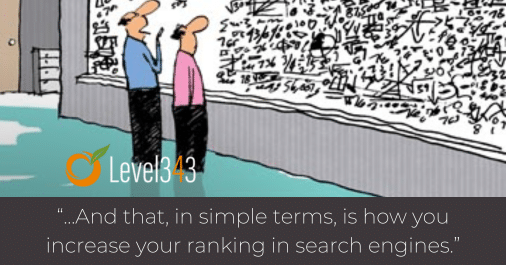
On-page SEO, a critical facet of search engine optimization, focuses exclusively on enhancing the elements within your website to improve its position in the search rankings. This comprehensive guide not only revisits the foundational steps of on-page optimization but also integrates contemporary techniques and insights to equip you with a robust strategy for today’s digital landscape.
Understanding On-Page SEO
At its core, on-page SEO involves optimizing the content and HTML element source code of a page. Unlike off-page SEO, which pertains to external signals like backlinks, on-page SEO is completely within your control. It begins with meticulous keyword research to identify terms and phrases your target audience uses. This research is foundational, shaping the optimization process and ensuring your content is aligned with user intent.
Step 1: Keyword Research & Application
The advent of semantic search and user intent understanding by search engines necessitates a more nuanced approach to keyword selection. Tools like Google’s Keyword Planner and SEMrush have evolved, offering deeper insights into keyword relevance, competition, and search volume. Select keywords that accurately describe your offerings and reflect the search intent of your audience.
Defining Your Per-page Words & Phrases
Just as each web page should have different (but supporting) content, each page should also have different (but, again, supporting) keywords or phrases. Before you start writing, decide:
• What content will go on each page and
• What key phrase defines the content on each page
Each page on your site should target a unique keyword or phrase, directly related to the content. For example, a law firm specializing in personal injury might have separate pages for each practice area, each optimized for specific keywords like “personal injury law information” or “auto accident attorney.”
The title tag and meta description serve as your first interaction with potential visitors in search results. They should be compelling, incorporating your target keyword while also providing a clear, concise summary of the page content. Search engines have become more sophisticated, emphasizing the importance of relevance and user experience over mere keyword presence.
Page Title
It should have the primary word or phrase for the page you’re working on. For instance, if your key phrase is something like “personal injury lawyer, Sacramento,” which covers what you do and where you do it, your home page title might look like this:
Personal Injury Lawyer | Sacramento, California | Your Company Name
Don’t use the same title for every page; the title should always match the page content.
Page Description
This short sentence shows under the page title. There’s a lot of pressure on this tiny piece of writing, because it’s a good place to put your key word/phrase, but it’s also the introduction to your business for online traffic.
Example: “Don Chito, the public’s personal injury lawyer, has spent more than fifteen years winning cases for injured defendants in Sacramento, California. If you’ve been injured, he can help!”
Don’t use the same description on every page; be creative!
Step 3: Understanding Audience Needs
Begin by developing a thorough understanding of your target audience. This involves identifying their pain points, questions, interests, and the type of content they prefer. For instance, if your target audience comprises small business owners looking to enhance their online presence, your content could address topics like “The Ultimate Guide to SEO for Small Businesses” or “How to Leverage Social Media to Grow Your Small Business.”
Keyword Integration and Topic Relevance
Once you’ve identified your audience’s needs, conduct keyword research to find terms and phrases they use in search queries related to your content topics. Tools like Ahrefs, Google Keyword Planner, and SEMrush can provide insights into search volume and competition levels for these keywords.
For example, if “organic gardening” is a primary keyword, related topics might include “how to start an organic garden,” “best organic gardening practices,” and “top organic fertilizers.” Incorporating these keywords and topics into your content not only improves SEO but also ensures the relevance of your content to your audience’s interests.
Structuring Your Content
Use headings (H1, H2, H3, etc.) to structure your content effectively. Headings make your content easier to read and navigate, both for users and search engines. For instance, an article on “The Ultimate Guide to SEO for Small Businesses” might have the following structure:
- H1: The Ultimate Guide to SEO for Small Businesses
- H2: Understanding SEO Basics
- H3: Keyword Research for Small Businesses
- H3: On-Page Optimization Techniques
- H2: Advanced SEO Strategies
- H3: Link Building for Small Business Websites
- H3: Local SEO Tactics
Incorporating keywords into these headings naturally boosts your SEO efforts while keeping the content organized and reader-friendly.
Providing Value Through Content
Your content should aim to answer questions, solve problems, and provide unique insights or information. For example, a blog post titled “10 Innovative SEO Strategies for 2024” should offer readers new, actionable strategies not widely discussed elsewhere, thereby offering value and encouraging engagement and sharing.
Examples of High-Quality Content
- How-to Guides: Detailed, step-by-step guides that help your audience achieve a specific goal. For example, “How to Implement Technical SEO: A Beginner’s Guide.”
- Case Studies: Real-world examples of how your product or service has helped others. “How Company X Grew Its Traffic by 300% with These SEO Strategies.”
- Infographics: Visual content that explains complex topics simply and engagingly. An infographic on “The Evolution of Search Engine Algorithms” can attract links and social shares.
- Videos: Engaging and informative videos that address specific topics of interest. “The Top 5 SEO Mistakes to Avoid in 2024” could be a video that succinctly delivers valuable content.
Step 4: User Experience and Site Architecture
Modern SEO extends beyond keywords and meta tags to include user experience (UX) and site architecture. Ensuring your site is navigable and accessible contributes to on-page optimization. This includes mobile responsiveness, site speed optimization, and clear call-to-action (CTA) buttons. Google’s Page Experience update underscores the importance of a seamless user experience in ranking algorithms.
If your page title and description are bringing visitors, but the visitors aren’t staying or acting, you have a few options. You can:
- Compare your description and content to make sure your description isn’t misleading. Are they finding what they expect when they get to the actual page?
- Check your content for readability. Is it difficult to understand? Have you filled it full of industry terms that laymen wouldn’t get?
- Check for a call to action. Does the page ask them to do anything? For instance, is there a contact area, phone number or offer to sign up for a newsletter? If your visitors aren’t doing anything besides reading, it may be because you didn’t ask them to
- Check content reach. Does your content reach out to consumers? Does it touch on the needs they might have, or is it all about you and your company?
- The only place that should discuss you is your About page. Everything else should be focused on the visitors.
- Get a focus group. Rather than racking your brains trying to figure out what’s wrong, there’s always the option of a focus group. Ask your friends, family, acquaintances, people you pass on the street – anybody can be a part of your focus group.
- Ask them to look over your website and give feedback… and then pay attention. This information can be invaluable to your business success!
Step 5: Internal Linking Strategy
Effective internal linking guides visitors through your website, increasing dwell time and reducing bounce rates, which are positive signals to search engines. Use descriptive anchor text that provides insight into the linked page’s content, aiding both users and search engine crawlers.
In HTML, a simple link looks like this:
<a href=”
For SEO, a link should look like this:
<a href=” title=”descriptive key word or phrase”>words</a>
Hint: the descriptive phrase should be for the page you’re linking to, not the page the link is on.
Step 6: Image Optimization
Images enhance the user experience but require optimization to contribute to SEO efforts. Use descriptive filenames and alt text that include relevant keywords to help search engines understand and index your visual content.
Wherever you have images, you should also have alternate text – if the image isn’t just decoration. Alternative text serves two purposes:
- Tells the search engines what the image is about and
- Tells the blind (via vocal web page reader) what the image is about
A simple image code looks like this: <img scr=”
For SEO, the image code should look like this:
<img src=” alt=”description, with keyword/phrase if relevant to image”>
Before you go stuffing your keywords into every image, remember the blind. If you use the same information for every alternate text, they’ll hear “keyword, keyword, keyword.” Be nice and considerate.
Beyond The Basics: Evolving On-Page SEO Practices
SEO is not a static field; it evolves as search algorithms become more sophisticated. Meta tags, once a cornerstone of SEO, have seen their influence wane in favor of genuine content quality and relevance. Similarly, header tags and keyword density are no longer the focus; instead, the emphasis is on creating user-focused content that addresses the needs and questions of your audience.
Modern SEO debunks myths such as the necessity of a specific keyword density, instead advocating for natural language and user-focused content creation. This aligns with the shift towards semantic search, where search engines interpret the context and intent behind queries.
Conclusion: A Balanced Approach
On-page optimization is a steady process of experimentation, discovery, and adaptation. This process necessitates striking a balance between technical SEO tactics and curating a positive user experience.
As these strategies are implemented, it is essential to monitor your website’s performance and make alterations driven by the observed results. Always remember, the aim is not only to rank high but to offer valuable experiences to your visitors, converting them into loyal customers or followers. Your website contents should be conducive to this aim, appealing to potential customers and driving a significant amount of traffic to your website.
In this SEO age, where user experience and content quality dominate, it is necessary to adopt an inclusive approach that blends technical optimization with compelling, user-focused content. Staying informed, being adaptable, and concentrating on delivering value are essential.
A great content strategy coupled with on-page SEO not only boosts your search engine rankings but also fosters meaningful engagement and conversion. Your values should align with providing high-quality information that enables potential customers to make informed decisions and engage effectively with your website.



